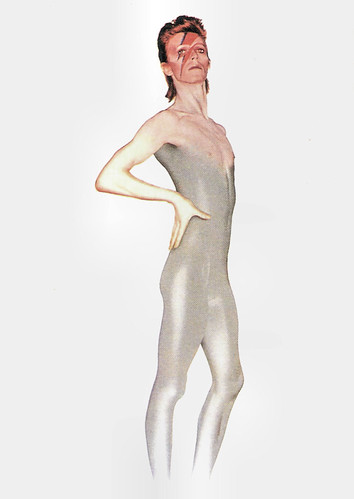
British postcard by Underground, no. U525. Ziggie.

American postcard by Fotofolio, no. P 254. Photo: Terry O'Neill, 1975.
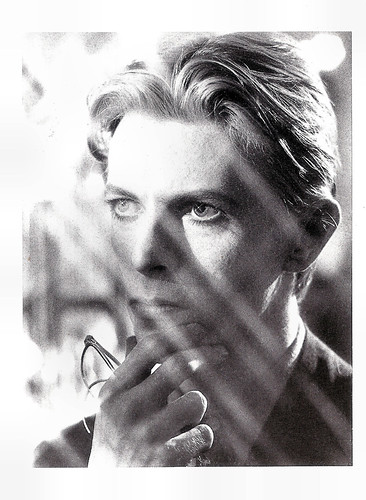
British postcard in the British Film Year Series. Photo: David James / Thorn EMI. Publicity still for The Man who Fell to the Earth (Nicolas Roeg, 1976).
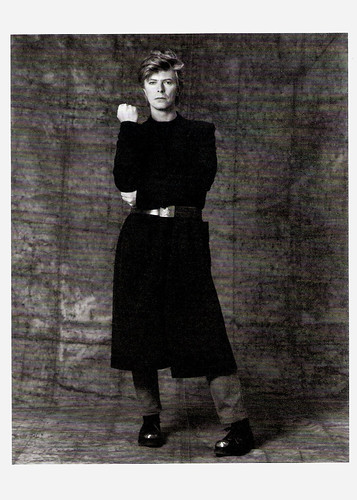
American postcard by Fotofolio, New York, NY., no. GG 21. Photo: Greg Gorman, 1987.
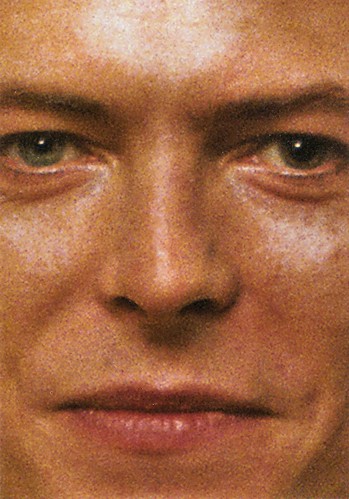
Dutch postcard by Art Unlimited, Amsterdam, no. 010a. Photo: Claude Vanheye.
Flamboyant, androgynous alter ego
David Bowie was born David Robert Haywood Jones in Brixton, London in 1947. His mother, Margaret Mary ‘Peggy’ née Burns, worked as a cinema usherette, while his father, Haywood Stenton ‘John’ Jones, was a promotions officer for Barnardo's. David's interest in music was stimulated when his father brought home a collection of American 45s by artists including The Platters, Fats Domino, Elvis Presley and Little Richard. He studied art, music, and design, including layout and typesetting. After Terry Burns, his half-brother, introduced him to modern jazz, his enthusiasm for players like Charles Mingus and John Coltrane led his mother to give him a plastic alto saxophone in 1961.
A year later, the 15-years old Davy Jones formed his first band The Konrads, playing guitar-based rock & roll at local youth gatherings and weddings. Several bands followed, without success. To prevent confusion with Davy Jones, the lead singer of The Monkees, he renamed himself after the 19th-century American frontiersman Jim Bowie and the knife he had popularised. David Bowie studied dramatic arts under dancer Lindsay Kemp, from avant-garde theatre and mime to commedia dell'arte. Bowie became immersed in the creation of personae to present to the world. Kemp gave him the role of Cloud in his theatrical production Pierrot in Turquoise (1967).
In the black-and-white short The Image (Michael Armstrong, 1969), Bowie played a ghostly boy who emerges from a troubled artist's (Michael Byrne) painting to haunt him. Bowie also made a brief appearance in The Virgin Soldiers (John Dexter, 1969). In April 1969, he met Angela Barnett (also known as Angie Bowie) and they would marry within a year. Her impact on him was immediate, and her involvement in his career was far-reaching. In 1971, they had a son, later film director Duncan Jones, also known as Zowie Bowie.
David Bowie first caught the eye and ear of the public in July 1969, when his song Space Oddity reached the top five of the UK Singles Chart. It was released at the time of the moon landing. Despite the fact that the literal meaning of the lyrics relates to an astronaut who is lost in space, this song was used by the BBC in their coverage of the moon landing, and this helped it become such a success. After a three-year period of experimentation, he re-emerged in 1972 during the glam rock era with the flamboyant, androgynous alter ego Ziggy Stardust, spearheaded by the hit single Starman and the album The Rise and Fall of Ziggy Stardust and the Spiders from Mars, a concept album about a space-age rock star.
The relatively short-lived Ziggy persona proved merely one facet of a career marked by continual reinvention, musical innovation and striking visual presentation. In 1975, Bowie achieved his first major American crossover success with the number-one single Fame and the hit album Young Americans, which the singer characterised as ‘plastic soul’. The sound constituted a radical shift in style that initially alienated many of his UK devotees. He then confounded the expectations of both his record label and his American audiences by recording the minimalist album Low (1977) — the first of three collaborations with Brian Eno over the next two years. The so-called Berlin Trilogy albums (Low, Heroes and Lodger) all reached the UK top five and received lasting critical praise.
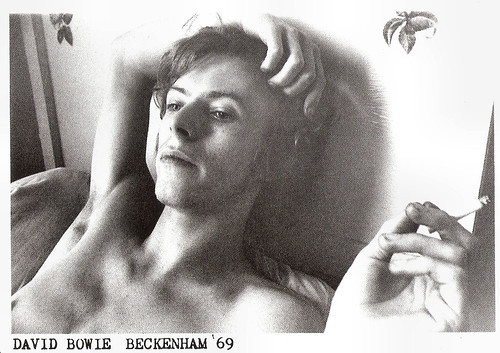
British postcard by Cult Images Ltd., Enfield, Middlesex, no. PC 108. Photo: Ray Stevenson. Beckenham '69.

French postcard by Ebullitions, no. 8.

German postcard by O & P Agi-Sydney, Stauffenberg, no. CP 770.
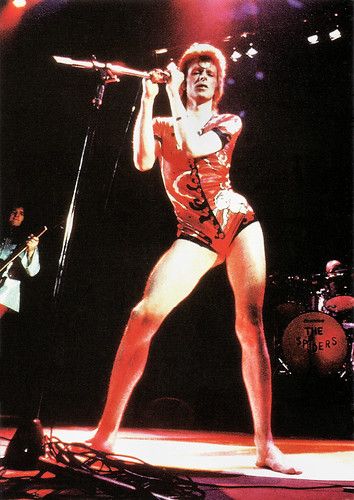
British postcard by Pyramid, Leicester, no. PC 8030. Photo: Bowie as Ziggy Stardust, live.
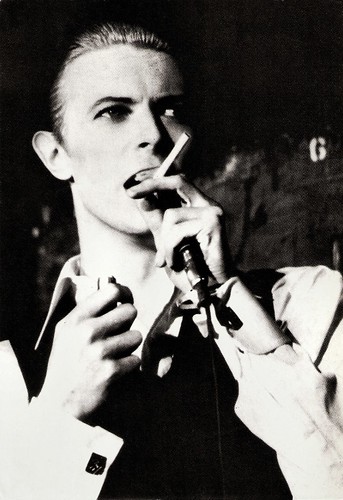
French postcard by Humour à la Carte, Paris, no. 3401. Photo: J.L. Rancurel. David Bowie at the Pavillon de Paris, 1976.
Gigolo
In 1976 David Bowie earned acclaim for his first major film role. In The Man Who Fell to Earth (Nicolas Roeg, 1976) he played an unhappy alien from a dying planet who becomes a famous industrialist and pop star as he tries to find a way home. Mark Deming at AllMovie: “While Bowie doesn't come off as a terribly skilled actor, he's highly effective as an alien presence (and his character's jittery paranoia got an unexpected boost from Bowie's well-documented cocaine abuse in this period), and he manages to radiate a human sense of sadness and loss while maintaining a cold, unearthly emotional distance.”
His performance helped the film become a modest box-office success. His next film, the Anglo-German co-production Schöner Gigolo, Armer Gigolo/Just a Gigolo (David Hemmings, 1979), saw Bowie in the lead role as Prussian officer Paul von Przygodski, who, returning from World War I, is discovered by a Baroness (Marlene Dietrich in her final screen performance) and put into her gigolo stable. However, the critics were negative and the Sunday Mirror considered Bowie ‘completely miscast’.
In this period, his commercial success as a recording artist was also uneven. Towards the end of the 1970s, Bowie finally kicked his drug habit and had smash hits with the single Ashes to Ashes (1980), its parent album Scary Monsters (and Super Creeps), and the single Under Pressure (1981), a collaboration with Queen. On Broadway, he earned high praise for his expressive performance in 'The Elephant Man'. He played the part 157 times between 1980 and 1981.
Bowie did a cameo performance as himself in a concert sequence in the German film Christiane F. – Wir Kinder vom Bahnhof Zoo (Ulrich Edel, 1981). The soundtrack of the film about a young girl's drug addiction in West Berlin featured much material from his Berlin Trilogy albums. Bowie then starred as a vampire in The Hunger (Tony Scott, 1983), with Catherine Deneuve.
That same year, he played Major Jack Celliers, a prisoner of war in a Japanese internment camp in Merry Christmas, Mr. Lawrence (Nagisa Oshima, 1983), based on Laurens van der Post's novel 'The Seed and the Sower'. Bowie also had a cameo in the pirate comedy Yellowbeard (Mel Damski, 1983) created by Monty Python members. In 1983, he also reached a new commercial peak with the album Let's Dance, which yielded several hit singles. The tour which followed, Serious Moonlight, was his most successful ever.

French postcard by Underground, no. U 182. Photo: publicity still for The Man Who Fell to Earth (Nicolas Roeg, 1976).
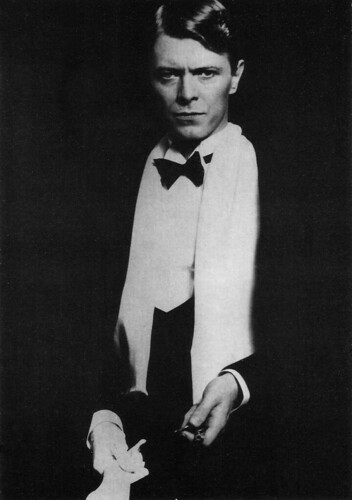
French postcard by Euro Images, St. Jean de Veudas, no. CP 57. Photo: publicity still for Schöner Gigolo, armer Gigolo/Just a Gigolo (David Hemmings, 1978).

French Postcard by Les Editions Gil in the série chanteurs, no. 76. Publicity still for Merry Christmas, Mr. Lawrence (Nagisa Oshima, 1983).
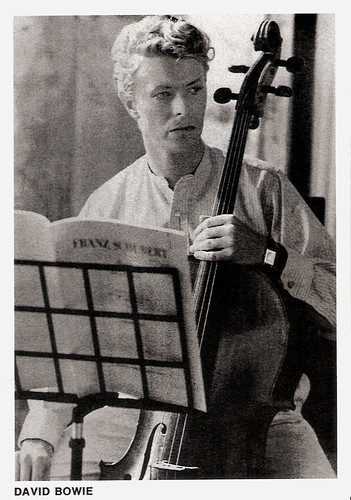
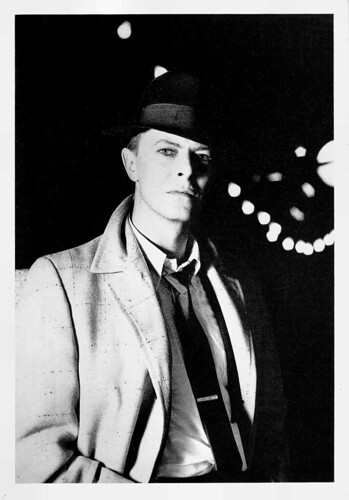
I was a little surprised that you did not mention Mr. Bowie's formation of the band Tin Machine in 1988; this band was significant in that two of the members were Soupy Sales' sons, Tony Sales on bass, and Hunt Sales on drums.
ReplyDeleteThanks for the addition!
ReplyDelete